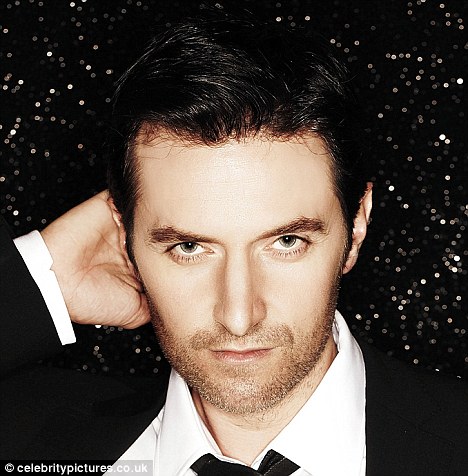Post-script to Berlin Station 1.5: Grieshaber or Grieshaber knockoff?
I had mentioned here that I find the topic of interior decoration as a piece of authenticity interesting. Last night I was looking at this frame:
and I mentioned the photo that referred to Esther Krug’s Junge Pioniere / FDJ past. I was intrigued by the larger print, though, so I sent this cap to ex-SO because it reminded me of some art that his (West) German parents had in their living room by a twentieth-century German print artist, H. A. P. Grieshaber. I didn’t look super hard, but I didn’t find this image attributed to him anywhere. What points in that direction are the graphic features of the image, the motif of the falling angel, and the colors. Speaking against it (apart from the fact that I couldn’t identify it) is the way the leg seems to fall out of the frame of the print.
Amusingly to me, ex-SO said about the frames of the family pictures that they were “too bourgeois” for the GDR. Ex-SO was skeptical that a family from East Berlin would have photos of Communist-related events in silver frames. (I don’t think they’re silver; I think they’re stamped metal.) Grieshaber was “left enough” that you can imagine a regime-compliant GDR family having one of his prints in their apartment, at least ideologically, but after the mid-1960s days his new work was not cheap, and now his works can go for prices from €1,500 — €25,000. As I joked to ex-SO, maybe her family was Reisekader (the class of East Germans legally permitted to leave the country because they were considered ideologically invulnerable to temptations in the West).
But in any case, the implication at the beginning of the scene that Esther’s apartment is a family inheritance (“my family’s been in Germany for a long time” — itself an odd statement, it would make more sense to say “my family’s been in Berlin for a long time,” as most German families have been in Germany for a long time) jars a bit with the idea that she has a spotless GDR childhood. The GDR worked hard to get private property out of the hands of its citizens, although it’s conceivable that she was able to get the apartment back after 1989, if the property was seized involuntarily. The whole question of what happened to property in East Germany after 1989 is an endlessly complicated one, because it involved addressing not only GDR-era seizures but also resolving many seizures from the National Socialist period (whose expected heirs were sometimes dead or no longer living in Germany, and some of whom had signed settlement agreements under duress and so on) and ensuing transfers and/or reparations payments to the original owners after the end of the GDR. I remember staying in several hotels as late as 1994 where signs apologized for the state of the premises and explained that the hotel operators were waiting to begin renovations until the law established to whom the property belonged.
Or maybe she just bought the art after 1989. But that would imply her family is quite wealthy. I’m again torn (given how many niggling things are popping up in this show, bit by bit) between seeing this as a clue that her backstory isn’t quite right, and thinking it’s just a continuity question.
Or maybe it’s an artist ex-SO and I didn’t recognize, and it’s more easily associated with the GDR?





i love that you and your ex-SO seem to be on such good terms. I hope that’s OK to say, it just seems (at least in my personal circle of friends/acquaintances) that the end of a relationship isn’t always so harmonious.
LikeLike
The first three years afterwards were not good. But in the end we share a lot of decisive memories.
LikeLike
Interesting. I wish I could watch the show as well. Regarding the graphic – It could be museum print, nothing outrageously expensive, no? Gerenot Richter was a well-known artist in the GDR who did some graphics in a similar style (though not always). The show is not set in the early 90s, is it? I studied in Leipzig and by the mid-90s a lot of those old places were done up quite nicely (especially in the cities) unless, as you mentioned, the owner situation was unclear. But most parents of my uni friends had really nice places that showed no trace of former GDR by then. So, I guess if the show is set closer to today, then her apartment and the decorations (silver frames and all) are not too far off.
(Maybe her parents were higher-ranking folks in the Stasi, SED, or even spies themselves? That would have gotten them some privileges including a nice apartment back in the day.)
LikeLike
Well, it’s kind of the question I’m asking. The apartment doesn’t scream “modern renovation.” It looks like it has an original parquet floor, for example, original wallpaper, lots of art. We were chatting about whether the other painting in this picture could be Markus Lüpertz (I think it’s not figural enough), but in any case I think this art is supposed to signal that it wasn’t cheap. There’s another modernist painting on the wall behind where she is standing in this photo that one can’t see clearly. Unless it’s all reproductions, it says Großbürgertum / Bildungsbürgerhintergrund, so to speak. It may just be a general issue with the show (it’s interesting, for example, how the Frosts’ apartment is furnished — in one scene their kitchen looks modern, but their living / dining space looks traditional / older style — in one scene it looks like they have a Flokati, in another, they have all of the accoutrements of serving a digestif and coffee dating from about 1980), but I’m wondering if the signals here are pointing to a past that the average American viewer is probably not going to recognize (certainly SED at a minimum).
Of course, yes, it could all be reproductions but the apartment isn’t really staged that way. Alternatively she probably has a good salary and could have bought lower-end Grieshaber herself; then again in episode 2 a low salary is cited by her predecessor as the reason he decided to spy for the US.
re: Richter — I don’t think it’s him, but I can only see images on the web in b/w.
re: seeing the series: install a VPN (not hola) and search for it on Putlocker.
LikeLike
Very intersting post-script.
Being in Germany I haven’t seen the episode therefore I can only judge the look and feel of the interiors by your screencaps.
And the very fact that there IS a mantel (and a fireplace?) screams “modern renovation”, because you hardly find fireplaces in pre-war apartment-buildings in Berlin. The common means of heating was tiled stoves and later all-fuel stoves, never fireplaces.
Regarding the floor: Everyone tries to maintain the original parquet or wooden board floors, they are far too precious to get rid off.
Usually the board floors had a coat of dark red (called “Ochsenblut”) laquer. First thing the most people did was to strip the floors of this paint.
This kind of approach (too precious to shed) also applies for the original doors and double-glazed “box-windows” (Kastenfenster).
In the GDR floors often were covered in fairly ugly (and hideously smelly) linoleum, my first flat in East-Berlin back in 1992 did have this problem. Beneath the linoleum were perfectly healthy board floors I happily gave another lick of paint because to strip, sand and oil them is messy and very strenuous work. I simply wasn’t up for it. Lazy me…
From what I’ve seen so far (the first four episodes and a couple of screencaps) I’m kind of torn when it comes to the interiors. I know it might sound like nitpicking but there is something slightly off about them. Let’s say they are not typical in the details, they sometimes seem incongruent, like the mantel, too modern windows, the completely outdated and GDR-museumlike looking safe-house apartment in episode1 (?).
And I’m asking myself whether this is on purpose to characterize the people who live there, artistic freedom or just kind of sloppy.
I still can’t wrap my mind around it, because obviously the production tried very hard to get it right (and it does look fantastic), but as I said it feels a bit off.
LikeLike
I’m not saying there was never any renovation in her renovation, just that there wasn’t a complete modern renovation. I’m not sure there’s a fireplace there. All I can see its a mantel.
Big chunks of the HU were still covered in that linoleum in the mid 2000s, including my office.
I’m torn about the safehouse. The ones that we’ve seen (and the Pension Heidrun) definitely look like pre-Wende stuff. OTOH I have seen Pensions with wildly outofdate furnishings all over Germany (the one that stands out was in Bayreuth).
In any case on this one my instinct was apparently right.
LikeLike
Absolutely right about Pensions and small hotels in East and Westgermany, they seem to exist in a strange bubble. 😉
LikeLike
Aha … and five minutes into episode 6, Esther’s father is revealed as a highly placed Stasi agent. I’m not so clueless (and maybe the show dressing is better than I am giving it credit for)
LikeLike
[…] 5 thoughts are here, and I put a postscript here, which I am including because it allowed me to deduce a plot element in this episode. Doing this […]
LikeLike
Berlin Station, episode 6, first impressions [spoilers] | Me + Richard Armitage said this on November 21, 2016 at 7:39 am |
[…] the glamorous spy seduces with his aplomb and superiority. She invites him into her apartment (from which we scoped out her family background a week before the show let us know it) for a drink […]
LikeLike
Can Berlin Station fix the Esther and Daniel thing? [part 1] #richardarmitage | Me + Richard Armitage said this on January 2, 2018 at 11:14 am |